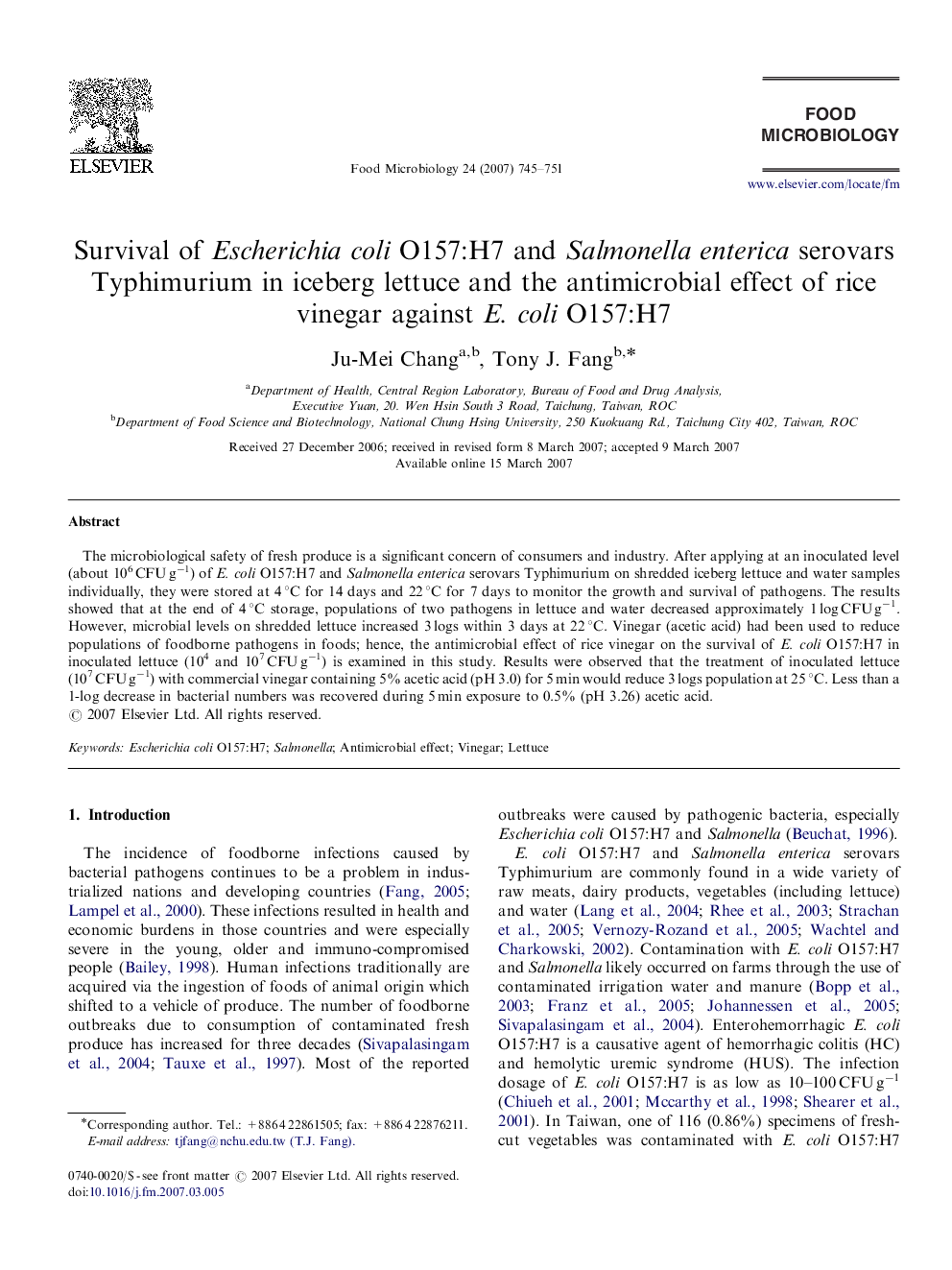| Article ID | Journal | Published Year | Pages | File Type |
|---|---|---|---|---|
| 4363683 | Food Microbiology | 2007 | 7 Pages |
The microbiological safety of fresh produce is a significant concern of consumers and industry. After applying at an inoculated level (about 106 CFU g−1) of E. coli O157:H7 and Salmonella enterica serovars Typhimurium on shredded iceberg lettuce and water samples individually, they were stored at 4 °C for 14 days and 22 °C for 7 days to monitor the growth and survival of pathogens. The results showed that at the end of 4 °C storage, populations of two pathogens in lettuce and water decreased approximately 1 log CFU g−1. However, microbial levels on shredded lettuce increased 3 logs within 3 days at 22 °C. Vinegar (acetic acid) had been used to reduce populations of foodborne pathogens in foods; hence, the antimicrobial effect of rice vinegar on the survival of E. coli O157:H7 in inoculated lettuce (104 and 107 CFU g−1) is examined in this study. Results were observed that the treatment of inoculated lettuce (107 CFU g−1) with commercial vinegar containing 5% acetic acid (pH 3.0) for 5 min would reduce 3 logs population at 25 °C. Less than a 1-log decrease in bacterial numbers was recovered during 5 min exposure to 0.5% (pH 3.26) acetic acid.
